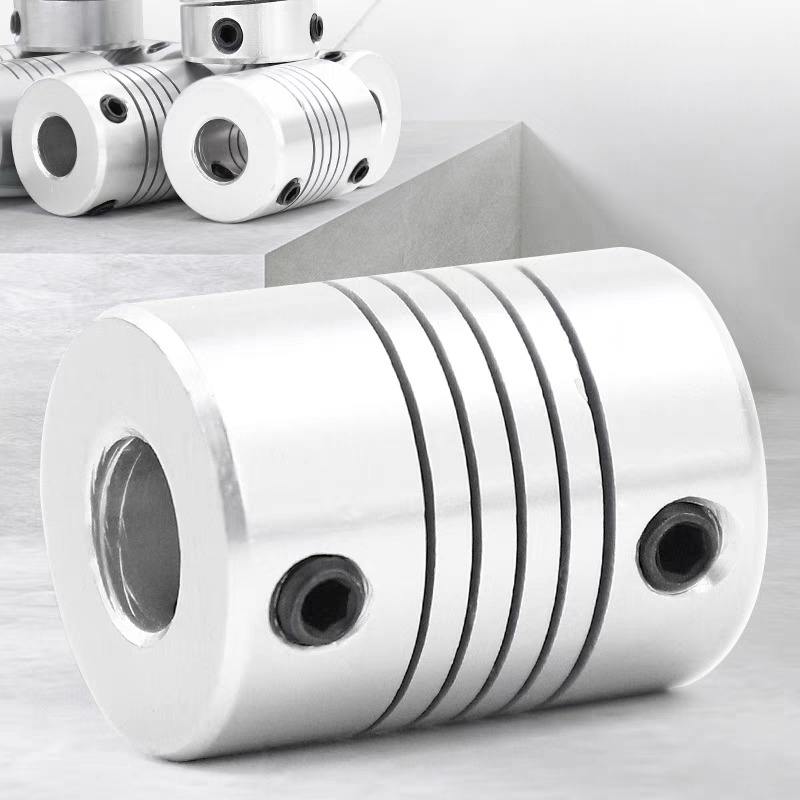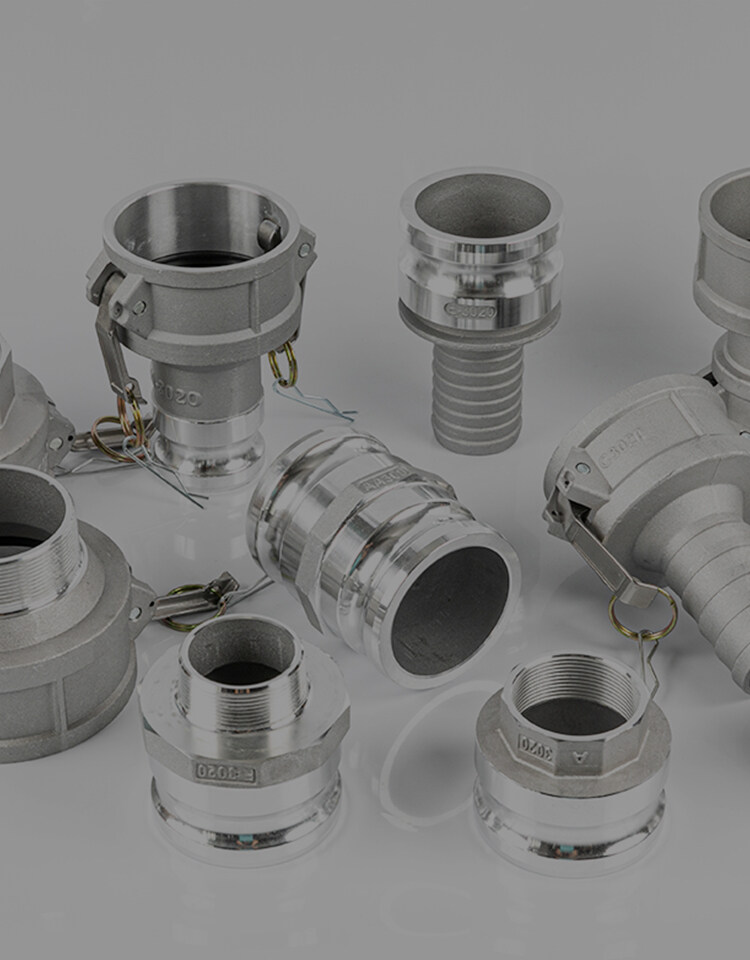Email format error
Email cannot be empty
Email already exists
6-20 characters(letters plus numbers only)
The password is inconsistent
Email format error
Email cannot be empty
Email does not exist
6-20 characters(letters plus numbers only)
The password is inconsistent

News
Here, you can describe a piece of text you want to express

High-Speed Coupling Manufacturers: Pioneers of Dynamic Motion Solutions
In the world of mechanical power transmission, high-speed couplings serve as critical components in the machinery that drives our industries forward. High-speed coupling manufacturers are at the forefront of innovation, providing solutions that ensure efficiency, reliability, and precision in various applications. From the turbines that generate our electricity to the compressors that power HVAC systems, high-speed couplings are indispensable. This post will explore the expertise of high-speed coupling manufacturers, the importance of their products, and how they continue to revolutionize the industry.
The Role of High-Speed Couplings in Modern Machinery
Understanding High-Speed Couplings
High-speed couplings are mechanical devices designed to connect two shafts while transmitting torque and accommodating misalignment, all at high rotational speeds. These couplings must maintain their integrity and performance under extreme conditions, including high temperatures, heavy loads, and varying speeds. High-speed coupling manufacturers have mastered the art of balancing these factors to produce reliable and efficient products.
Applications and Industries Served
The applications for high-speed couplings are diverse and span across multiple industries. In the aerospace sector, they are used in jet engines and auxiliary power units where precision and reliability are non-negotiable. The energy industry relies on them for wind turbine gearboxes and power generation equipment. In the automotive sector, high-speed couplings are found in test benches and high-performance engines. Manufacturers must understand the unique challenges of each industry to provide suitable coupling solutions.
The Evolution of High-Speed Coupling Technology
Over the years, high-speed coupling technology has evolved significantly. Early couplings were simple and rigid, leading to issues with misalignment and vibration. Today, manufacturers produce sophisticated flexible couplings that can compensate for axial, radial, and angular misalignments. Advancements in materials science and manufacturing techniques have also contributed to lighter, stronger, and more durable couplings capable of handling higher speeds and loads.
Selecting the Right High-Speed Coupling Manufacturer
Criteria for Choosing a Manufacturer
When selecting a high-speed coupling manufacturer, several criteria should be considered. These include the manufacturer’s experience in the industry, their track record of innovation, the quality of their products, and their ability to provide custom solutions. Additionally, their responsiveness to customer service inquiries and support for their products post-purchase are important factors.
The Importance of Customization in High-Speed Couplings
Customization is crucial in high-speed couplings due to the specific demands of different applications. A one-size-fits-all approach is rarely effective. The manufacturers that offer customization can tailor their products to the exact requirements of the application, such as torque capacity, misalignment tolerance, and environmental conditions.
Evaluating Manufacturer Credentials and Capabilities
Evaluating a manufacturer’s credentials involves looking at their certifications, such as ISO standards, which indicate adherence to international quality management practices. Assessing their capabilities includes examining their technological expertise, the range of products they offer, and their capacity to deliver large or complex orders. It’s also beneficial to review case studies or testimonials from previous clients to gauge their satisfaction with the manufacturer’s products and services.
The Manufacturing Process of High-Speed Couplings
Design Considerations for High-Speed Applications
The design of high-speed couplings must account for factors such as rotational speed, torque, and the types of loads they will encounter. Engineers use advanced computational methods to simulate the stresses and performance of the coupling under various conditions. This ensures that the final design is robust enough to handle the intended application.
Materials and Manufacturing Techniques
The choice of materials for high-speed couplings is critical. Manufacturers often use high-grade alloys, composites, or specially treated metals that offer superior strength-to-weight ratios and excellent fatigue resistance. Manufacturing techniques such as precision CNC machining, laser cutting, and advanced forging methods are employed to achieve the tight tolerances required for high-speed applications.
Quality Control and Testing Protocols
Rigorous quality control and testing protocols are in place to ensure that every high-speed coupling meets the manufacturer’s standards. This includes dimensional inspections, material testing, and dynamic testing where the coupling is run at high speeds to monitor its performance. Any defects or deviations from the specifications are addressed before the product leaves the factory.
Collaborating with High-Speed Coupling Manufacturers
The Benefits of Working with Industry Experts
Collaborating with manufacturers offers numerous benefits. These experts have a deep understanding of the dynamics involved in high-speed applications and can provide valuable insights into selecting the right coupling for your needs. They can also offer guidance on installation, maintenance, and troubleshooting, ensuring that the coupling operates at peak performance. Furthermore, manufacturers often have access to the latest materials and technologies, which can translate into more efficient and longer-lasting couplings for your machinery.
Case Studies: Successful Partnerships
Real-world case studies can highlight the advantages of working with manufacturers. For instance, a case study might detail how a partnership between a manufacturer and an automotive company led to the development of a custom coupling solution that significantly reduced vibration and noise in high-performance vehicles. Another case could showcase how a wind turbine manufacturer worked with a coupling expert to design a coupling that could withstand extreme weather conditions, leading to improved turbine reliability and longevity.
How to Approach a Manufacturing Collaboration
When approaching a collaboration with a high-speed coupling manufacturer, it’s important to clearly define your requirements and constraints. Provide detailed information about the application, including speed, torque, and environmental factors. Be open to the manufacturer’s suggestions and leverage their expertise to explore various design options. Establishing clear communication channels and setting realistic timelines and expectations will help ensure a successful partnership.
Innovations from High-Speed Coupling Manufacturers
Advancements in Coupling Design
The manufacturers are constantly innovating to meet the evolving demands of industry. Recent advancements in coupling design include the use of lightweight materials, such as carbon fiber, which reduce inertia and improve response times. Other innovations involve the integration of sensors and monitoring systems that provide real-time feedback on coupling performance, allowing for predictive maintenance and reduced downtime.
Addressing Challenges in High-Speed Applications
One of the primary challenges in high-speed applications is managing the heat generated by friction and ensuring the coupling can handle the associated thermal expansion. Manufacturers are addressing these challenges by developing couplings with improved heat dissipation properties and designs that accommodate thermal growth without compromising performance. Additionally, they are exploring surface treatments and coatings that reduce friction and wear.
The Future of Coupling Technology
Looking ahead, the future of coupling technology is poised for further breakthroughs. Magnetic couplings, which transmit torque through magnetic forces rather than physical contact, are gaining attention for their ability to eliminate wear and reduce maintenance. Advances in additive manufacturing, or 3D printing, are also opening up new possibilities for custom and complex coupling geometries that were previously difficult or impossible to produce.
The Global Landscape of High-Speed Coupling Manufacturers
High-Speed Coupling Manufacturers in Different Regions
The global landscape is diverse, with key players spread across North America, Europe, Asia, and other regions. Each region has its own strengths and specialties, influenced by local industries and technological expertise. For example, European manufacturers may have a strong presence in precision engineering, while Asian manufacturers might excel in mass production and scalability.
The Impact of Global Supply Chains on Coupling Availability
Global supply chains play a significant role in the availability and delivery of high-speed couplings. Manufacturers must navigate logistics, trade regulations, and currency fluctuations to ensure that their products reach customers in a timely and cost-effective manner. Disruptions in the supply chain, such as those caused by global events or natural disasters, can impact lead times and availability, highlighting the importance of having robust supply chain management.
Navigating International Standards and Regulations
The manufacturers must also comply with international standards and regulations, which can vary from country to country. Standards such as ISO, ANSI, and DIN ensure that couplings meet certain performance and safety criteria. Manufacturers need to be well-versed in these standards to ensure their products are compliant and can be used in different markets around the world.
The Role of Distributors and Suppliers
Helical Coupling Distributors: Bridging the Gap Between Manufacturers and End-Users
Helical coupling distributors play a crucial role in the supply chain by ensuring that high-speed couplings reach a wide range of customers. These distributors work closely with manufacturers to stock a variety of couplings that cater to different industrial needs. They provide technical support, assist with selection, and often offer additional services such as just-in-time delivery, which can be invaluable for customers needing quick replacements to minimize downtime.
The Value Added by Fluid Coupling Manufacturers and Distributors
Fluid coupling manufacturers specialize in producing couplings that use hydraulic fluid to transmit power. These couplings are essential for applications requiring controlled startup and protection from mechanical overload. Distributors of fluid couplings, such as the fluid coupling from China, often provide comprehensive solutions, including installation and maintenance services, ensuring that customers receive not only a product but also the expertise to utilize it effectively.
How Hex Coupling Nut Manufacturers Contribute to the Industry
Hex coupling nut manufacturers, although a niche within the broader coupling industry, contribute significantly by providing specialized components that facilitate the secure attachment of couplings to shafts. These manufacturers ensure that their products meet stringent standards, as the integrity of these nuts is critical for maintaining the safety and performance of the coupling assembly.
Maintenance and Troubleshooting for High-Speed Couplings
Best Practices for Coupling Maintenance
Regular maintenance is key to the longevity and performance of high-speed couplings. Best practices include routine inspections for wear and damage, proper lubrication, and timely replacement of worn components. Manufacturers often provide maintenance guidelines that are specific to their coupling models, which should be followed to ensure optimal operation.
Common Issues and Solutions in High-Speed Couplings
Common issues with high-speed couplings include misalignment, imbalance, and bearing failure. Solutions may involve realigning the shafts, balancing the coupling assembly, or replacing bearings. In some cases, the root cause of the problem may be more complex, requiring a thorough analysis by the manufacturer or an experienced technician.
The Role of Manufacturers in Supporting End-User Maintenance
The manufacturers support end-user maintenance through various means. They may offer training programs, technical documentation, and customer service hotlines. Some manufacturers also provide on-site support or remote monitoring services to assist with maintenance and troubleshooting, ensuring that their customers can maintain the couplings effectively.
Sustainability and Environmental Considerations
Eco-Friendly Practices in Coupling Manufacturing
Sustainability is becoming increasingly important in the manufacturing industry. High-speed coupling manufacturers are adopting eco-friendly practices such as reducing waste, recycling materials, and using energy-efficient processes. These practices not only help protect the environment but also improve the overall sustainability of the industry.
The Role of High-Speed Couplings in Energy Efficiency
High-speed couplings can contribute to energy efficiency by reducing power loss and improving the transmission efficiency of mechanical systems. Manufacturers are designing couplings that minimize friction and wear, leading to less energy consumption and lower operating costs for end-users.
Manufacturers’ Commitment to Sustainable Development
Many high-speed coupling manufacturers are committed to sustainable development by investing in research and development of environmentally friendly materials and technologies. They are also working to minimize the environmental impact of their products throughout their lifecycle, from production to disposal.
Conclusion: The Integral Role of High-Speed Coupling Manufacturers in Industry Advancement
The high-speed coupling manufacturers are pivotal in driving industrial progress, offering essential products for modern machinery and fostering innovation to meet the growing complexities of industry. Their commitment to continuous research and development is crucial for producing advanced, reliable, and efficient couplings. Looking ahead, the future promises even more sophisticated high-speed couplings, with lighter and stronger materials and smart technologies enhancing performance. The synergy between manufacturers, distributors, and end-users will be instrumental in leveraging these advancements for optimal machinery operation and industry advancement.

